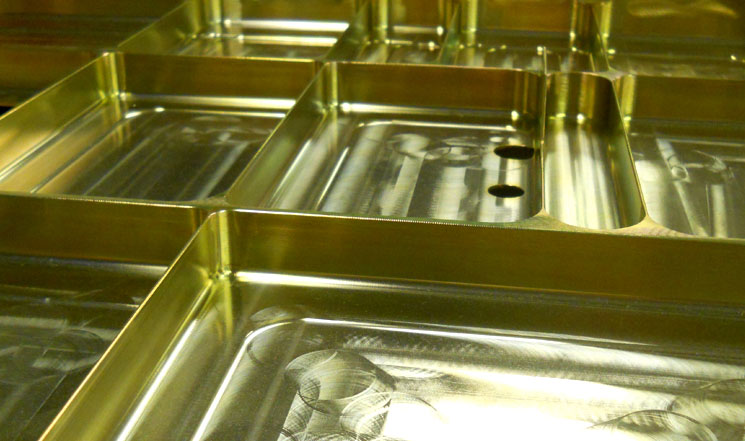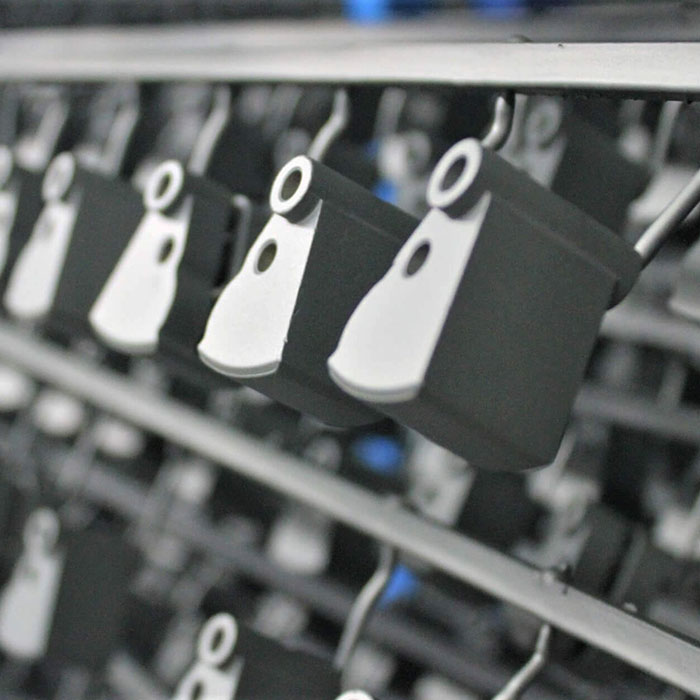MILITARY ∙ MEDICAL ∙ AEROSPACE ∙ ELECTRONICS ∙ SEMICONDUCTOR ∙ CONSTRUCTION

Chem film coating, also known as chromate conversion coating or by its military specification name MIL-DTL-5541, is a chemical treatment applied to aluminum and aluminum alloys to provide corrosion resistance, enhance paint adhesion, and maintain electrical conductivity.
🔍 How It Works:
Chem film is created through a chemical reaction between the metal surface and a solution typically containing chromium compounds. This reaction forms a protective layer on the surface of the metal.
✅ Benefits:
-
Corrosion Protection: Especially important for aerospace, military, and electronics applications.
-
Paint Adhesion: Serves as a base coat that improves bonding of subsequent paint or powder coating.
-
Electrical Conductivity: Unlike anodizing, chem film maintains conductivity, which is vital for grounding and shielding.
-
Minimal Dimensional Impact: It’s a very thin coating, so it doesn’t significantly change part dimensions.
-
Non-Reflective Finish: Typically gives a matte, slightly yellow or clear iridescent appearance.
⚠️ Types:
-
Type I: Uses hexavalent chromium (more traditional but has environmental concerns).
-
Type II: Uses trivalent chromium (more environmentally friendly, used where RoHS compliance is required).
🛠 Common Uses:
-
Aircraft parts
-
Electronic enclosures
-
Heat sinks
-
Aluminum panels in construction
Drawbacks of Chem Film Coatings
Chem film coatings—also known as chromate conversion coatings—are widely used for corrosion resistance and to improve paint adhesion on aluminum and other metals. While they offer significant benefits, there are some drawbacks to consider:
1. Environmental and Health Concerns
-
Hexavalent Chromium: Traditional chem films often use hexavalent chromium (Cr⁶⁺), which is toxic and carcinogenic. This has led to strict environmental regulations and disposal requirements.
-
Worker Safety: Handling these chemicals requires protective equipment and careful procedures, increasing operational complexity.
2. Durability Limitations
-
Mechanical Weakness: Chem film coatings are thin and can be damaged by abrasion or rough handling.
-
Limited Wear Resistance: They are not suitable as standalone coatings for applications where surface wear is significant.
3. Compatibility Issues
-
Paint Sensitivity: While chem film promotes paint adhesion, compatibility depends on the type of paint and preparation.
-
Electrical Conductivity: The coating is conductive, which may not be ideal in applications requiring electrical insulation.
4. Aesthetic Limitations
-
Appearance Variability: The finish can appear uneven or blotchy, especially on large or visible surfaces.
5. Cost and Compliance
-
Regulatory Costs: Compliance with environmental laws and disposal regulations can increase operational expenses.
-
Alternative Processes: Safer alternatives like trivalent chromate or non-chromate coatings may be more expensive or require process changes.


